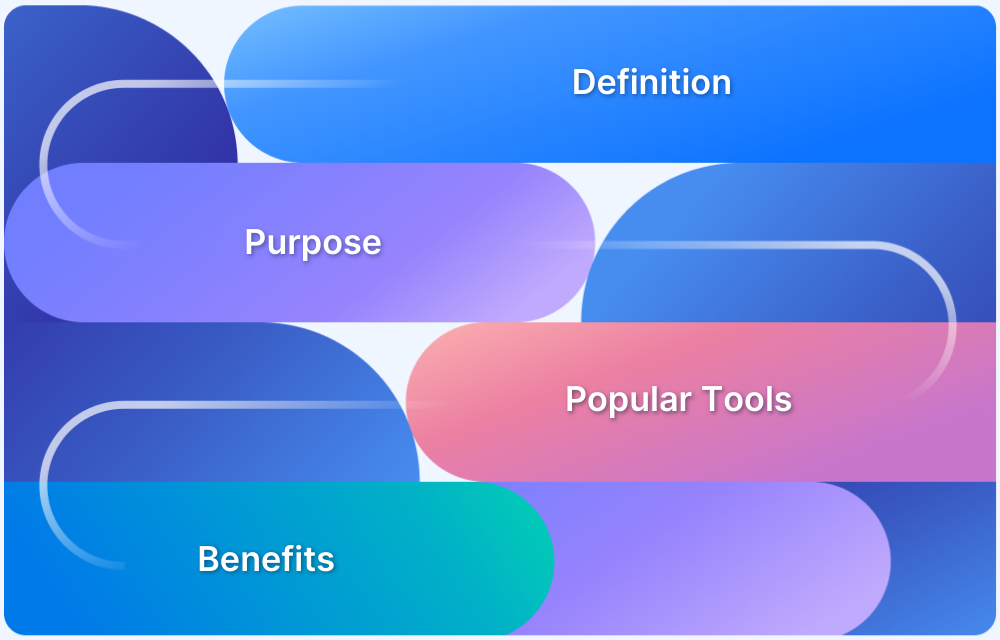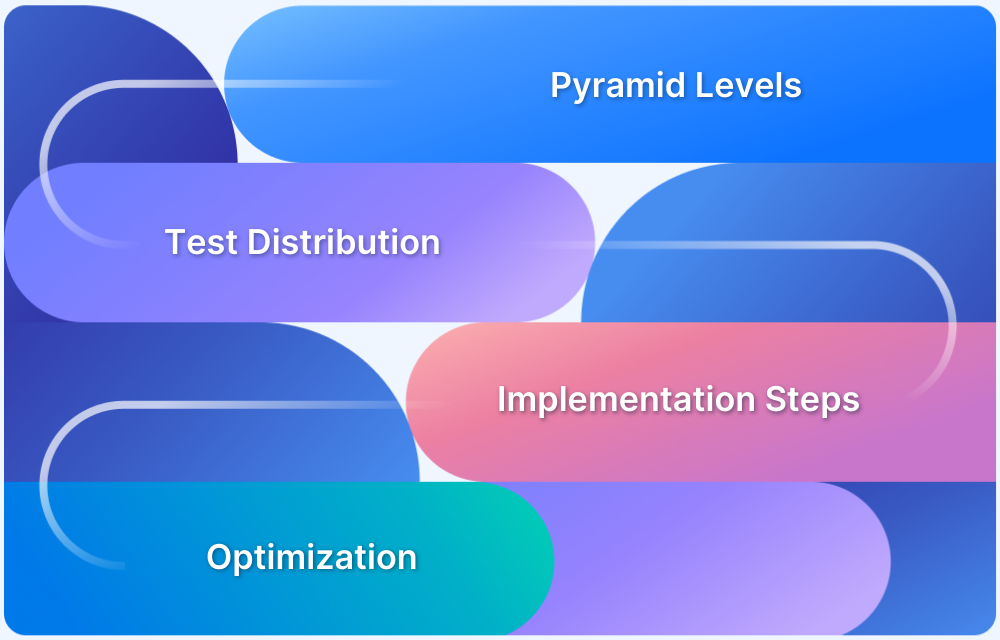Most programmers or testers have heard about the term “harness”. It is a tool for controlling a software process that involves detailed testing of the data, drivers, features or any other unit of an application in different scenarios under various conditions.
Overview
What is Test Harness
A test harness is a collection of tools, scripts, and data used to automate the execution of tests, control the test environment, and report test results. It’s especially useful for running unit, integration, or regression tests without manual intervention.
Key Features of the Test Harness
- Test Execution Automation
- Test Data Management
- Result Logging & Reporting
- Error Handling
- Environment Configuration
- Reusability and Modularity
- Integration Support
Benefits of Test Harness
- Automates testing
- Isolates components
- Boosts test coverage
- Faster feedback loop
- Enables regression testing
- Detailed reporting
- Custom test setups
Keep reading to learn more about test harness, its importance, types, and the best way to conduct this test.
What is Test Harness?
A test harness is a set of tools, scripts, and data designed to automate test execution, manage the test environment, and generate test reports. It is key in running unit, integration, or regression tests efficiently and without manual input.
A test harness helps QA testers to test each app’s features in detail, executing tests and generating a report for developers. So that developers can analyze the report and make changes per desired output. Typically, the test harness collects software, data, drivers, and other tools to test an application in different circumstances.
Key Features of the Test Harness
Here are the key features of a test harness:
- Test Execution Automation: Automates the running of test cases across different environments. This helps you execute unit, integration, regression, and system tests.
- Test Data Management: Supports creation, storage, and manipulation of test data.
- Result Logging & Reporting: Captures logs during test execution and generates detailed test reports showing pass/fail status, errors, and execution times.
- Error Handling: Identifies and logs test failures or exceptions.
- Environment Configuration: Supports setting up and tearing down test environments. With this feature, you can simulate different platforms, browsers, devices, or network conditions.
- Integration Support: Integrates with CI/CD pipelines (e.g., Jenkins, GitLab CI).
- Reusability and Modularity: Allows reuse of test components, scripts, and data setups and supports modular test case development for scalability.
Importance of Test Harness
A few key reasons for using the test harness process in software testing:
- Automate the testing process
- Execute test suites of test cases
- Generate detailed test reports
- Useful for debugging
- Record test each time
- Analyse test results
- Help in test case optimisation
- Increases productivity through automation
- Easy to handle the complex testing conditions
Context where Test Harness is used
When it comes to context, the test harness is used in two major tests:
- Automation Testing
- Integration Testing
Automation Testing
In Automation Testing, a test harness works as a framework that contains testing scripts with specific parameters to run those scripts more effectively. After testing, a detailed report is generated to see the outcome. So that developers can analyze the report, make improvements and develop the desired output.
Automation testing is required when there is a need for:
- Repetitive testing
- Complex testing
- Smoke testing
- Data driven testing
- Performance testing
An example of a test harness would be to say you have built a delivery app of some sort. Now you need to test every feature of the app to see whether everything is fine and there should not be any loose ends.
It would be difficult to check the code, its stability, whether the GUI is okay, and whether the app is secure. Since it is difficult to test it in a single shot.
With BrowserStack App Automate, you can test on 3,500+ real cloud devices & browsers. It allows you to check each feature in detail in different scenarios, thus consuming less time and effort and resulting in fewer errors.
Also integrate with BrowserStack using Appium, Espresso, XCUITest and Flutter.
Integration Testing
Integration Testing is another type of software testing in which many units and components are combined to test their functionalities to determine whether they’re producing the desired output.
In simple words, it is used to identify errors when all the units & components are integrated. But integration testing errors rarely happen, so many QA testers prefer to use test stubs and test drivers. A test use case can give an example of Integration Testing.
Imagine the following scenario, an app consisting of three modules. Say, one module is Login Page, the other one is a Mailbox, and the third one is Deleting emails or something of that type. Now, look at how each of them has been integrated logically.
Perform the Login Page testing by the Unit Testing method. Then check how it’s linked to the page that has the mailbox. Again, perform an integration test on the Delete Mails page.
How to Implement a Test Harness
Test harness ensures consistency and repeatability in testing, making it easier to catch bugs and verify code quality. Here’s how you can implement it:
Step 1: Define What to Test
Suppose you want to test a calculator module with basic operations.
# calculator.py
def add(a, b):
return a + b
def divide(a, b):
if b == 0:
raise ValueError("Cannot divide by zero")
return a / bCreating the Test Harness
Step 2: Create Test Scripts
# test_calculator.py import unittest from calculator import add, divide class TestCalculator(unittest.TestCase): def test_add(self): self.assertEqual(add(2, 3), 5) def test_divide(self): self.assertEqual(divide(10, 2), 5) def test_divide_by_zero(self): with self.assertRaises(ValueError): divide(10, 0) if __name__ == "__main__": unittest.main()
Step 3: Set Up Logging & Reporting
unittest automatically reports test results in a structured format:
$ python test_calculator.py .. . ---------------------------------------------------------------------- Ran 3 tests in 0.001s OK
If needed, you can enhance this with HTML reports using unittest-xml-reporting or similar tools.
Simulate the Test Harness
To simulate its workflow:
- Test driver: unittest.main() runs all tests.
- Input: Hardcoded in the test cases (2 + 3, 10 / 2, etc.)
- Assertions: Validate the expected outcome.
- Output:
Test 1: PASS Test 2: PASS Test 3: PASS (Exception correctly raised)
Test Harness Tools
Here are some of the best test harness tools to use:
1. JUnit (Java)
JUnit is a widely-used unit testing framework for Java applications. It’s simple, fast, and integrates well with build tools and IDEs.
- Annotations like @Test, @Before, @After
- Assertions to verify test outcomes (assertEquals, assertTrue, etc.)
- Supports test suites and parameterized tests
- Easily integrates with Maven, Gradle, and CI/CD tools
2. PyTest (Python)
PyTest is a powerful and flexible testing framework for Python, used for unit, API, and functional testing.
- Simple test syntax (assert keyword)
- Rich plugin ecosystem (e.g., pytest-html, pytest-cov)
- Built-in support for fixtures and parameterization
- Captures logs and exceptions automatically
3. Mocha + Chai (JavaScript)
Mocha is a JavaScript test framework for Node.js apps. Chai is an assertion library often used with Mocha.
Read More: How To Generate Mocha Test Reports
Benefits of Test Harness
Test harness is commonly used in automated testing, especially in unit testing and integration testing, and greatly benefits them. Here are the key benefits of test harness:
- Automates testing: Reduces manual effort by automatically running test cases.
- Isolates components: Tests individual modules without needing the entire system to be ready.
- Boosts test coverage: Enables thorough testing, including rare and edge-case scenarios.
- Faster feedback loop: Detects bugs early during development, speeding up the release cycle.
- Enables regression testing: Ensures new changes don’t break existing features by re-running old tests.
- Custom test setups: Allows simulation of complex or specific conditions.
- Detailed reporting: Provides logs and results for easier debugging and analysis.
Limitations of Test Harness
Though test harness offers automation and efficiency in testing, it has its own set of challenges:
- Initial setup effort: Creating a robust test harness can be time-consuming and complex, especially for large systems.
- Maintenance overhead: As the codebase evolves, test scripts and configurations may need frequent updates to stay relevant.
- Limited real-world simulation: It may not accurately replicate all real-world scenarios, especially in UI or end-to-end testing.
- Dependency on skilled resources: Designing and maintaining a test harness often requires technical expertise in scripting and test architecture.
- False positives/negatives: Poorly designed test harnesses can lead to unreliable results, such as passing failing code or flagging correct code as broken.
- Not a complete solution: A test harness supports testing but doesn’t replace the need for other testing types like exploratory, usability, or performance testing.
Difference between Test Harness vs. Test Framework
| Test Harness | Test Framework |
|---|---|
| A Test Harness is a collection of drivers & stubs that interact in the software testing | A set of processes, procedures, abstract concepts and environment in the automated testing |
| No option for “Record & Playback” scripts in test harness | Record & Playback script available in this framework |
| It covers all necessary information for compiling, testing and deployment. | Test Framework contains information like test library, testing tools, automated testing, practices etc. |
Conclusion
The test harness is a valuable testing process to find detailed issues in software testing, increase productivity and generate a detailed report that helps developers to resolve the issues.
Note that with BrowserStack Real Device Cloud, QA testers can automate the application testing & test each feature in detail with different scenarios and generate a report. So developers can analyze and resolve the issues more effectively.







